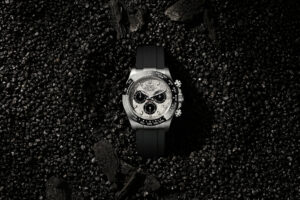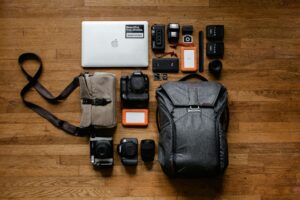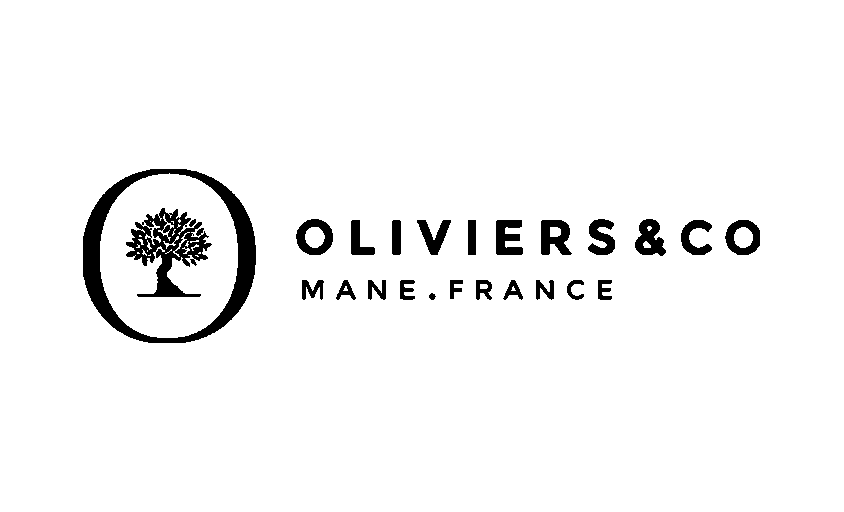Commercial Photography : What is it ?
In this article :
Commercial photography plays a central role in the world of marketing, capturing attention and influencing purchasing decisions. Whether for a large-scale campaign or a more targeted advertisement, each image aims to spark consumer interest. In this article, we will explore the various aspects of this fascinating discipline, from its techniques and creative process to its evolution and challenges. Commercial photography is not just a means of selling a product but a strategic art that shapes the image of brands and companies.
What is it?
Commercial photography is a form of photography primarily aimed at promoting a product, service, or brand. Unlike artistic photography, which focuses on expressing a personal vision or evoking an emotional reaction, commercial photography centers around a clear, often commercial message. Its goal is to capture an image that grabs the public’s interest while conveying the brand’s values and identity.
The main role of commercial photography is persuasion. This means that every detail (from composition to lighting and props) must be carefully considered to maximize the impact of the image. It also involves a deep understanding of the product and its target audience to create an image that speaks directly to their needs and desires.
Compared to other forms of photography, such as fashion or landscape photography, commercial photography stands out for its commercial aspect and its close connection to specific marketing objectives. The aim is to create visuals that go beyond simply depicting the product: the image must embody the brand’s promises and attract the consumer.
The different forms of commercial photography
Commercial photography comes in many forms, each with its own specific goals and characteristics:
- Product photography: Often associated with packshots or still life photography, this type focuses on showcasing a product in a clear and visually appealing way. The goal is to make the consumer want to purchase the product by presenting its features in a sharp and attractive manner.

- Fashion and lifestyle photography: Used in advertising campaigns within the fashion or lifestyle industries, this type of photography places products in everyday settings, often interacting with models. The aim is to appeal to the audience by showcasing the product in a context that evokes emotions or aspirations.

- Portrait photography: When companies choose to highlight faces in their ads, portrait photography becomes a powerful tool. Used in campaigns for brands, services, or businesses, it helps create a human connection, reinforcing the authenticity and credibility of the message.

-
Documentary-style photography: Though less common, this approach is sometimes used in advertisements that tell a story or illustrate the real-life impact of a product or service. This type of photography can be especially powerful for brands seeking to convey a strong or emotional message.

- Architectural photography: When a brand wants to showcase a commercial space, a store, or a facility, architectural photography becomes a key element of the campaign. It highlights specific aspects of a location that reflect the brand’s or company’s identity.

Each form has its own style and purpose, and choosing the right approach depends on the goals of the campaign and the product or service being promoted.
Key Techniques in Commercial Photography
To create effective commercial photography, several techniques must be mastered to capture the viewer’s attention while conveying a clear message. Here are some essential techniques:
- Lighting: This is one of the most crucial elements in commercial photography. Lighting should not only highlight the product but also create a specific mood that aligns with the brand’s image. High-contrast lighting can add drama, while soft lighting can create a warm or elegant atmosphere.

- Choosing Angles and Composition: The way a product or model is positioned within the frame can turn a simple image into a powerful advertisement. Shooting angles are used to highlight specific features of the product and evoke targeted emotions. Composition, on the other hand, guides the viewer’s eye and helps create a visually harmonious balance.
- Photo Retouching: Retouching is often essential in commercial photography. Whether it’s to correct small details or introduce creative elements, retouching allows for fine-tuning the image to maximize its impact. It’s especially important in product photography, where imperfections must be removed to deliver a flawless final result.

- The Equipment Used: Commercial photographers select their gear based on the specific needs of the campaign. Macro lenses for capturing fine details, high-definition cameras for maximum clarity, and accessories like reflectors and filters to adjust lighting and color, all are used to achieve the desired visual effect.

The Creative Process in Commercial Photography
The creative process in commercial photography is a complex collaboration between the photographer, the creative team, the client, and sometimes other stakeholders such as stylists or directors. This conceptual phase is essential to ensure that the final image meets the client’s expectations while aligning with the artistic vision of the campaign.
Understanding the Client Brief and Collaborating with the Creative Team

Starting point of any commercial photography project is the client’s brief. This working document contains all the necessary information to understand the campaign’s objectives: which product or service is being highlighted, which target audience is aimed at, and what message needs to be conveyed. A thorough understanding of the brief helps define the artistic direction, the tone of the image, and the visual style to adopt.
Collaboration with the creative team, which may include art directors, project managers, and designers, is essential. The photographer must be able to understand the visual and creative constraints while bringing in their own technical expertise. It’s about finding a balance between the commercial requirements and the artistic aspirations of the campaign.
Research and concept development
Once the brief is approved, the research and concept development phase begins. This stage involves creating mood boards and storyboards to visualize the campaign’s aesthetics. These tools help define key elements such as the mood, colors, composition, and even the props that will be used on set.
Research may also include visual references and market studies to ensure that the image aligns with current trends while staying true to the brand’s identity. Sometimes, this phase is accompanied by tests, particularly in lighting or staging, to validate the visual direction before moving on to the shoot.
On-field execution
On-field execution, meaning the actual photoshoot, requires perfect management of time, resources, and teams. The photographer must ensure that every detail matches the creative vision. They direct models, adjust lighting, and oversee the entire process to achieve the perfect image. It is essential to remain flexible and adapt to unforeseen events while respecting deadlines and the allocated budget.
The evolution and challenges of modern commercial photography
Commercial photography has significantly evolved over the years in response to technological advancements, changing consumer expectations, and the evolution of communication channels. New opportunities have emerged, as well as new challenges.
From analog to digital
The transition from analog photography to digital photography was a revolution in the advertising field. With the digital era, photographers gained greater flexibility during shooting and in post-production. Retouching is now simpler and faster, and images can be edited for even more precise rendering.
The arrival of high-resolution cameras and advanced retouching software has allowed for perfecting details and creating stunning visuals. These technological advancements have also made it easier to integrate photography into the digital world, where images must not only be impressive but also optimized for various platforms such as social media, websites, and mobile apps.
The influence of social media and digital marketing

Social media has profoundly transformed commercial photography. Platforms like Instagram, Facebook, and Pinterest have created new content formats and enabled brands to reach a global audience. Commercial photography must now adapt to the visual demands of these platforms, where visual impact must be immediate and striking.
Advertising campaigns on social media often prioritize captivating images and short videos that encourage interaction. Photography must not only grab attention quickly but also be designed to be shared, commented on, and liked. This requires a different kind of creativity (often more spontaneous and authentic) while remaining true to the brand’s values.
The Impact of Digital Technology: The Rise of FOOH
One of the recent developments in commercial photography is the rise of FOOH (Fake Out Of Home), a form of digital outdoor advertising that has gained momentum in recent years.
Thanks to giant screens in public places such as subway stations, shopping malls, and even streets, brands can now broadcast dynamic and interactive advertisements.
This has led to a new approach in commercial photography, where visuals must not only capture attention quickly but also be optimized for large screens and various formats.
Ethical and social issues
As commercial photography becomes omnipresent in our daily lives, the ethical issues related to its use are becoming increasingly important. The representation of bodies, genders, and identities in advertising campaigns raises questions about diversity, inclusivity, and the social responsibility of brands.
Commercial photographers must be aware of these issues and ensure they avoid stereotypes. It is essential to provide visuals that reflect a more inclusive and respectful reality of different cultures without falling into superficial or unrealistic representations.
Challenges of the commercial photographer
A commercial photographer faces several challenges throughout their career. Here are the main ones:
- Working under pressure and meeting tight deadlines: Commercial photography projects are often subject to strict time constraints. Advertising campaigns have precise schedules, and photos must be ready to meet product launch dates or marketing campaigns. This requires the photographer to work efficiently while maintaining high image quality.
- Clients with high expectations: Clients’ expectations in commercial photography are extremely high. The photographer must have a thorough understanding of the brand’s commercial objectives and translate these expectations into impactful images. It may be necessary to adjust shots multiple times to satisfy the client’s requirements.
- Adapting to rapid market and technology changes: The commercial photography market evolves rapidly with new trends, digital tools, and changes in consumer behavior. A photographer must be able to adapt to new market demands and integrate new techniques while staying true to their style and visual signature.
How to become a commercial photographer?
The profession of a commercial photographer attracts many enthusiasts of photography and visual creation. However, it requires a unique combination of artistic, technical, and commercial skills. Here are some tips for those who want to venture into this demanding field.
Essential skills
A commercial photographer must possess a wide range of skills, both technical and artistic. Here are the key skills:
- Technical skills:
- Mastering cameras (DSLR, mirrorless, etc.)
- Controlling lighting and understanding its impact on the image
- Composing an image based on the message to be conveyed
- Using retouching software like Photoshop and Lightroom
- Creative and commercial skills:
- Understanding and interpreting a client brief
- Adapting visual style to the specific needs of each campaign
- Creating impactful visuals tailored to commercial objectives
- Project management skills:
- Working under pressure with tight deadlines
- Managing production teams (models, stylists, assistants)
- Collaborating effectively with other creatives (art directors, designers, etc.)
Recommended training and education
Although there is no single path to becoming a commercial photographer, some training programs can be particularly useful. Photography schools or specialized courses in visual arts provide foundational skills in photography and retouching. Additionally, courses in marketing, communication, or design can help better understand clients’ commercial needs.
Tips for getting started in the field
Starting in commercial photography requires a gradual strategy. Here are some practical tips:
- Build a strong portfolio:
- Showcase a variety of work, demonstrating both technical skills and the ability to meet different types of advertising briefs.
- Include personal projects or collaborations with small businesses.
- Participate in collaborative projects:
- Work with creative teams to develop your network and gain experience.
- Conduct shoots for everyday consumer products to gain practical experience.
- Use social media wisely:
Conclusion
Commercial photography is a fascinating and demanding field that combines art and commerce to create impactful and compelling visuals. By focusing on aesthetics, technique, and marketing strategy, this form of photography plays a crucial role in building brand images and influencing consumer behavior.
Whether it’s through highlighting products, creating a unique atmosphere, or telling a visual story, the commercial photographer becomes a key player in the modern marketing landscape. Constantly evolving with new technologies and social trends, this profession requires creativity, responsiveness, and precision.
For those aspiring to work in this field, it is important to stay curious, continuously refine skills, and adopt a collaborative approach with creative teams. The future of commercial photography is promising, and each new campaign offers opportunities to push the boundaries of visual creativity.
Would you like to entrust your next project to experts in commercial photography? Contact us today to discuss your needs and bring your visuals to life.
Jérémy Carlo is the editorial director at Rétines, where he ensures the consistency and clarity of all content produced by the studio.
Our Clients
Let’s discuss
What we do for you at Rétines
Meticulous work, an organised project and fast delivery. And to achieve this, we mobilise the right resources in our teams at the right time.
01
Pre-production
Artistic and technical direction tailored to the project.
Relevant recommendations on content, form and resources.
02
Photo Shooting
Photos taken by our experienced photographers.
Production that’s controlled, efficient and tailored to the needs of the project, with nothing superfluous.
03
Retouching
Technique
Photographs magnified by our retouching team.
Post-production to meet the commercial challenges of the brief.












